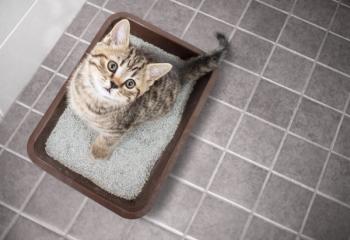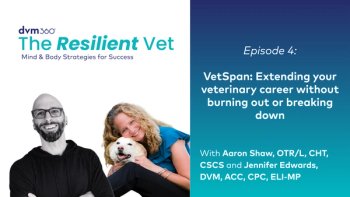
Protecting cattle from flies: Species identification and control methods
Flies can significantly impact the health of cattle
Flies can cause stress, reduce feed intake, and spread diseases in cattle, making them a major health concern. Without proper management, flies can have a major impact on cattle health, comfort, and productivity, according to a Texas A&M Veterinary Medicine & Biomedical Sciences (VMBS) report, where Eric Kneese, DVM, clinical assistant professor at Texas A&M VMBS and Dr Donald Bruce Lawhorn endowed faculty fellow in swine medicine at the department of Large Animal Clinical Sciences, provided information on the different flies that affect cattle, fly-resistant cattle, prevention and more.
With flies varying in species, each type affects cattle differently, according to Kneese, and the 4 most common flies affecting herds comprise1:
- House flies: Although they do not bite, house flies feed on manure, spreading bacteria that lead to infections and contributing to unsanitary conditions. With a dull gray color, these flies are usually 6 mm long with reddish, separated eyes and 4 dark, longitudinal stripes that run along their thorax.2
- Stable flies: These flies target a cow’s legs and lower body and are known for their painful bites. Just 5 to 10 flies per leg can cause restlessness, decreased feeding efficiency, and weight loss. Stable flies are gray, approximately 7 to 8 mm long, and have a similar appearance to house flies but with a “checkerboard” pattern on their ventral abdomen. These flies also have recognizable biting mouthparts.2
- Horn flies: This species gathers on a cow’s back and sides, leading to irritation, decreased weight gain, and a general decline in health. These gray-black flies are 3 to 4 mm, resembling stable flies while being more slender and approximately half their size.2
- Face flies: These insects feed on eye and nasal secretions, making them a major vector for infectious bovine keratoconjunctivitis (IBK), also known as pinkeye, which is both contagious and painful among cattle. These flies are dark gray, 6 to 8 mm, and resemble house flies with a slightly larger and darker build.2
Other flies that affect cattle include horse flies and deer flies, both of which are dark gray to dak brown in color. These flies feed on the back, neck and sides of cattle. With a painful bite, these species can cause 100 ml of blood loss when 20 to 30 of these flies feed on a cow for more than 6 hours.2
Horse flies are approximately 25 mm long with clear wings, while deer flies tend to be 6 mm to 10 mm long with a dark stripe across their wings. They can cause decreased weight gain in affected cattle.2
The second point that Kneese shared is that different cattle may have different susceptibility to flies. For example, cattle with darker coats tend to be more bothered by flies compared to light colored cattle.2 Additionally, white-coated Holstein dairy cows are more resistant to horn flies than dark-coated cows.1
“Research has shown that Bos indicus breeds, such as Brahman-influenced cattle, tend to be more resistant to flies than Bos taurus breeds, like British cattle,” Kneese said in the report.1 “This is because of specific physiological and behavioral traits that help them naturally fend off pests.”
Resistance to flies can vary even within a single breed of cattle. “A study on Chianina cows found that certain individuals had over 4 times as many flies as their more resistant counterparts,” added Kneese.1 “This suggests that factors beyond breed alone—such as individual genetic differences—play a key role in fly susceptibility.”
Control methods and prevention
Cattle owners often make the mistake of waiting too long to implement fly control measures, according to the Texas A&M report.1 “If you wait until flies are already a problem, management becomes much more difficult,” said Kneese in the report.1 “It’s always best to start early, stay consistent, and use a multimodal approach; combining insecticides, environmental management, biological control, and physical barriers.”
Kneese also suggests feed-through control, where insect growth regulators (IGRs) are added to pastures, passing through the cow’s system and into manure to stop larvae from developing into adult flies. Insecticides, which come as pour-on treatments, ear tags, sprays, and dust bags, are another control method. Sprays allow for quick, targeted treatment, according to VMBS. Meanwhile, dust bags coat cattle with insecticide as they pass through.1
Environmental management also plays a crucial role in fly preventing. “Flies lay eggs in moist, organic matter, like manure and decaying plant material,” Kneese said in the report.1 “Regularly cleaning stalls, pens, and pastures makes the area less hospitable for flies, reducing overall populations.”
Moreover, biological control offers natural protection from flies by using predators like parasitic wasps, which lay eggs on developing fly larvae, killing them before they mature. Other natural predators, such as beetles and birds, also help reduce fly populations.1
In addition, physical barriers and traps serve as another line of defense, according to VMBS.1 Although fly masks are often used for horses, they can also be applied to cattle to shield them from face flies. This barrier lowers irritation and the risk of eye infections. Sticky ribbons and mechanical traps, meanwhile, help catch flies.1
For prevention, Kneese advises stocking up on fly control products and maintaining clean pastures and barns. “Having insecticides, traps, and other fly control tools on hand will ensure a quick response when flies start emerging,” he said.1 “Maintaining a clean environment will help prevent fly populations from surging when warm weather returns.”
“Successful fly control is about prevention, consistency, and adaptation,” Kneese continued.1 “Cattle owners should work with veterinarians and extension specialists to develop a customized fly plan based on their location, cattle type, and management style.”
References
- Shoo, fly! Keeping cattle comfortable and healthy. News release. Texas A&M University. February 20, 2025. Accessed February 24, 2025.
https://vetmed.tamu.edu/news/pet-talk/protect-cattle-by-controlling-flies/ - Halstead J. Common flies of cattle. Kansas State University. Accessed February 24, 2025.
https://www.vet.k-state.edu/docs/vhc/farm/ag-practice-updates/Common_Flies.pdf
Newsletter
From exam room tips to practice management insights, get trusted veterinary news delivered straight to your inbox—subscribe to dvm360.






